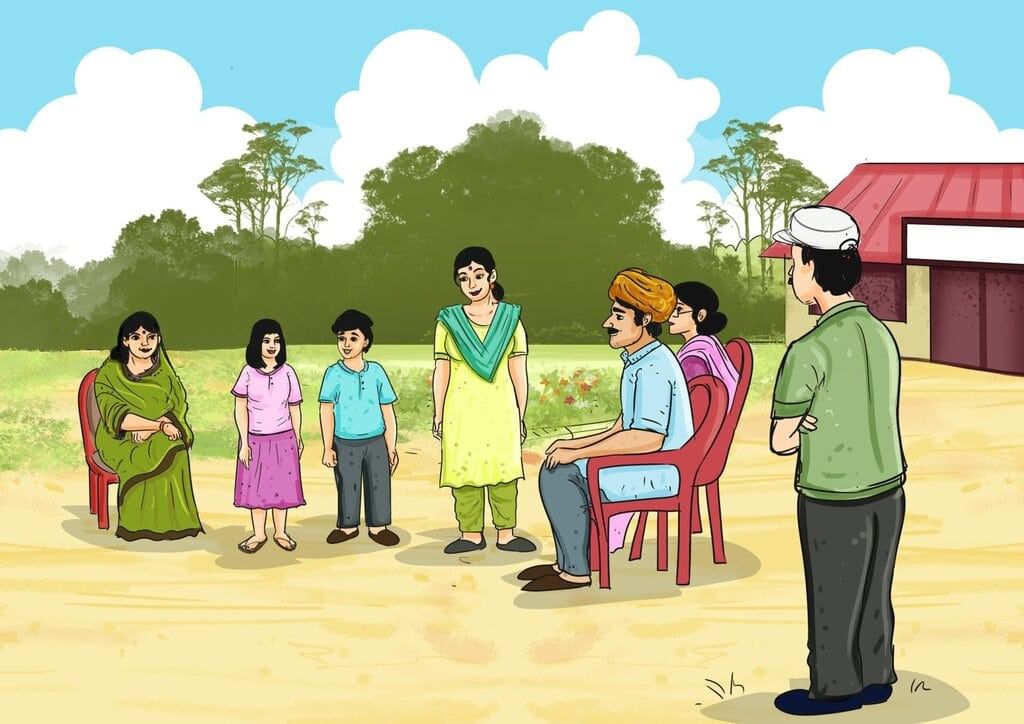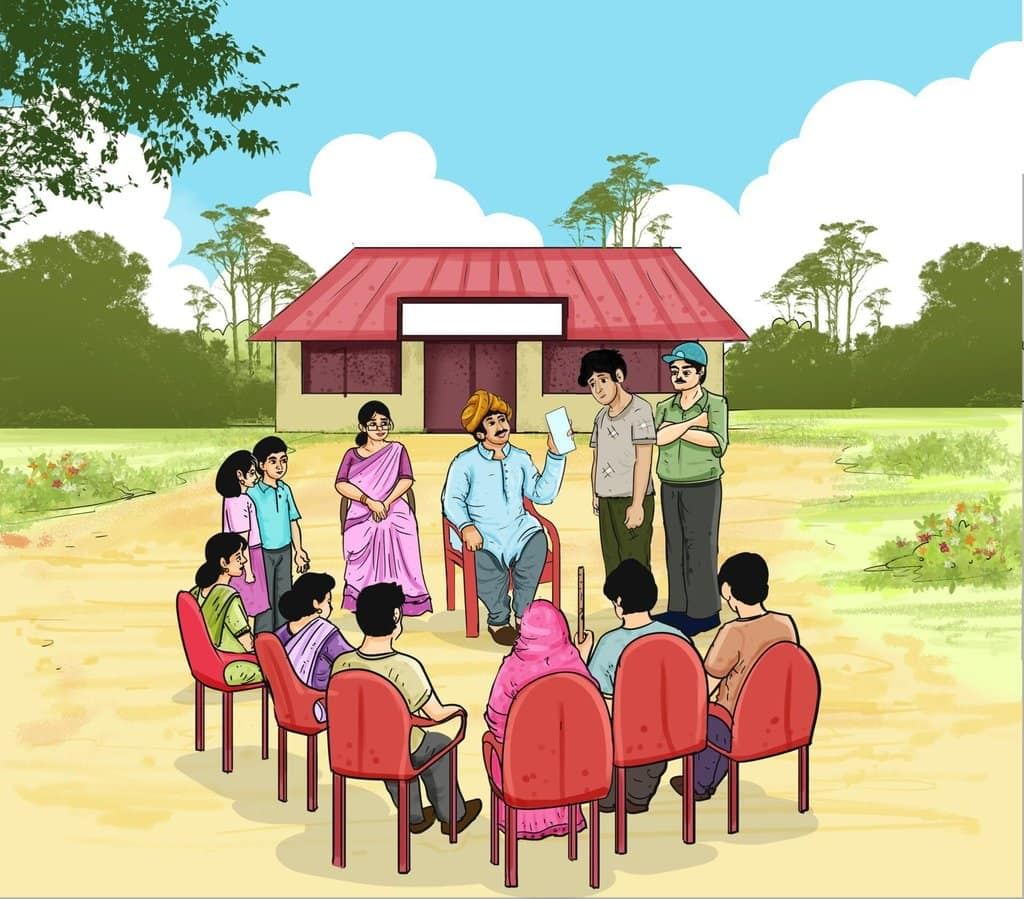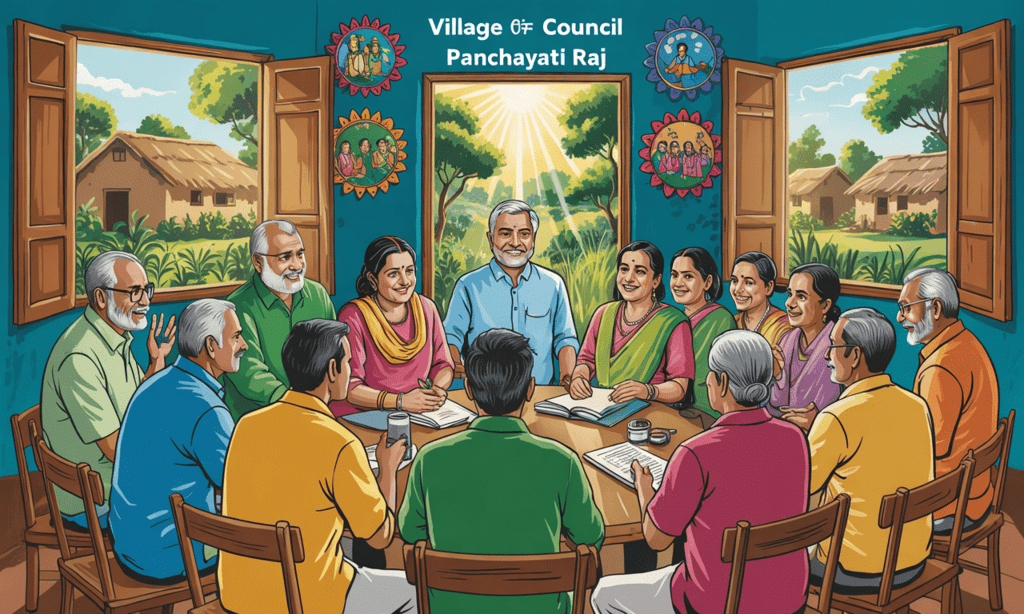Class 6 Scoial Science Chapter 4 Question Answers - Panchayati Raj
Q1. What is the literal meaning of panchayat?
Ans: The literal meaning of panchayat is a council formed by five individuals. This term is commonly used in India to refer to local self-governance bodies.
Q2. In the Hardas village, women go to get water from which river?
Ans: In Hardas village, women collect water from the Suru river.
Q3. The developmental work at the district level is taken care by the ___________.
Ans: The developmental work at the district level is managed by the Zila Parishad.
Q4. The secretary of the Gram Panchayat is not an elected person but is appointed by ____________.
Ans: The secretary of the Gram Panchayat is not an elected person but is appointed by the government.
Q5. Who is responsible for keeping a record of the Gram Panchayat and the Gram Sabha?
Ans: The secretary of the Gram Panchayat is responsible for maintaining the records of both the Gram Panchayat and the Gram Sabha. This role includes documenting decisions made in meetings. Keeping track of financial transactions.
Q6. Panchayati Raj system is in which level of a democratic government?
Ans: The Panchayati Raj system operates at the first level of a democratic government. It is designed to promote grassroots governance and local self-government in rural areas.
Q7. The Panchs and the Gram Panchayat are answerable to the ___________.
Ans: The Panchs and the Gram Panchayat are answerable to the Gram Sabha.
Q8. What do you mean by Gram Sabha?
Ans: Gram Sabha refers to a gathering of all adults residing in the area managed by a Panchayat.
Q9. Who is a Sarpanch?
Ans: A Sarpanch is the elected leader of a Panchayat, which is a local self-government body in rural areas of India. The role includes leading the Panchayat meetings and discussions. Implementing government schemes at the village level.
Q10. What does 'BPL' stand for?
Ans: BPL stands for Below Poverty Line. It is a classification used to identify individuals or households that earn less than the minimum income level necessary to meet basic needs.
Q11. Two village Panchs were awarded the Nirmal Gram Puruskar in 2005. To which state did they belong?
Ans: Two village Panchayats were awarded the Nirmal Gram Puruskar in 2005. They belonged to the state of Maharashtra.
Q12. The Gram Panchayat has a secretary who is also the secretary of the ____________.
Ans: The Gram Panchayat has a secretary who is also the secretary of the Gram Sabha.
Q13. How many levels are there in a Panchayat Raj System?
Ans: The Panchayat Raj System consists of three levels:
- Gram Panchayat: The village level.
- Block Samiti: The intermediate level for a group of villages.
- Zila Parishad: The district level.
Q14. The block plans are coordinated and consolidated by the__________.
Ans: The block plans are coordinated and consolidated by the Zila Parishad.
Q15. What is the other name for Janpad Panchayat?
Ans: Janpad Panchayat is also known as Panchayat Samiti.
Q16. Panchayat Samiti has many ____________ under it.
Ans: The Panchayat Samiti has several Gram Sabhas under its authority.
Q17. What is Zila Parishad?
Ans: Zila Parishad refers to the governing body at the district level in India. It plays a crucial role in local self-governance and development.
Q18. All the three levels of Panchayati Raj Institutions are elected directly by the _______.
Ans: All three levels of Panchayati Raj Institutions are elected directly by the people.
Q19. All India Panchayat Adhyaksha Sammelan was held in 2002 in ____________.
Ans: All India Panchayat Adhyaksha Sammelan was held in 2002 in Delhi.
Q20. Who approves the list of people below the poverty line in villages?
Ans: The Gram Sabha is responsible for finalising and approving the list of individuals living below the poverty line in rural areas.
Q21. The concept of Gram Swaraj was conceived by _____________.
Ans: The concept of Gram Swaraj was conceived by Mahatma Gandhi.
Q22. The Gram Panchayat meets ___________to implement the development programmes.
Ans: The Gram Panchayat meets regularly to implement its development programmes.
Q23. Who presides the meeting of the Gram Sabha?
Ans: The meeting of the Gram Sabha is presided over by the Panchayat President or the Sarpanch.
Q24. One of the important feature of the 73rd Amendment Act is ___________.
Ans: One of the important features of the 73rd Amendment Act is reservation for Scheduled Castes (SCs) and Scheduled Tribes (STs).
Q25. The work of the Gram Panchayat has to be approved by the ___________.
Ans: The work of the Gram Panchayat has to be approved by the Gram Sabha.
Q26. The Gram Sabha meetings are presided by the Sarpanch. True/False
Ans: The statement is true. Gram Sabha meetings are indeed presided over by the Sarpanch.
Q27. Every village Panchayat is divided into _________.
Ans: Every village Panchayat is divided into wards.
Q28. The Gram Panchayat is elected for ______ years.
Ans: The Gram Panchayat is elected for five years.
Q29. State the another name of Zila Parishad.
Ans: Another name of Zila Parishad is District Panchayat.
Q30. What is the age limit to become a member of the Gram Sabha?
Ans: The age limit to become a member of the Gram Sabha is 18 years. This means individuals must be at least 18 years old to participate in the Gram Sabha.
FAQs on Class 6 Scoial Science Chapter 4 Question Answers - Panchayati Raj
| 1. पंचायती राज क्या है? |  |
| 2. पंचायती राज के मुख्य स्तर कौन से हैं? |  |
| 3. ग्राम पंचायत के कार्य क्या होते हैं? |  |
| 4. पंचायती राज में चुनाव कैसे होते हैं? |  |
| 5. पंचायती राज के लाभ क्या हैं? |  |






















